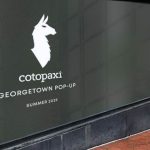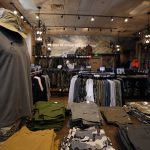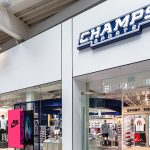The Gap Inc. plans to reduce the number of Gap brand
stores in North America to 700 by the end of 2013, a 34 percent decrease
in the number of those stores when compared to the end of 2007. It
didn't specify which stores would close.
Officials provided an update at its annual analyst meeting in New York City.
With about 3,100 company-operated stores and about 200 franchise stores in 36 countries and online orders shipped to over 90 countries, the company reaffirmed its goal of growing total sales outside of North America and online to about 30 percent by the end of fiscal 2013. At today’s event, leaders shared that retail sales outside North America increased 16 percent in the first half of the year, while revenue from its e-commerce business during this period increased 19 percent across its entire portfolio.
The company plans to bring the first store expression of its value brand, Old Navy, outside of North America, to Japan within the next 18 months, and plans to nearly triple the number of Gap stores in greater China from roughly 15 at the end of this year to about 45 by the end of 2012. The first Gap flagship in Hong Kong is set to open in a matter of weeks on Queen’s Road, as is the company’s first Banana Republic flagship in Paris later this year. The company’s athletic apparel brand, Athleta, is also on target to open over 50 stores by the end of 2013.
“The combination of our global strategy and formidable growth platform puts us in a strong position to expand our reach into the top 10 apparel markets worldwide,” said Glenn Murphy, chairman and chief executive officer of Gap Inc. “In North America, we’re taking a number of steps to improve sales in the near-term, and I’m confident that with a strong management team in place, we’re well positioned for sustained growth across the business.”
Speaking at its Gap Global Creative Center in New York City, brand presidents and merchants presented their plans to grow sales, such as: Gap brand, led by Art Peck, is making immediate adjustments across the business and testing provocative ideas, especially around product, store experience and marketing; Old Navy, led by Tom Wyatt, is building upon its improved performance from 2006 to 2010 through a new store model and overhauled marketing campaign in November that will reflect the brand’s sense of fun, fashion, family and value; and Banana Republic, led by Jack Calhoun, is making product adjustments to its women’s assortment to build off the momentum in its successful menswear division, and is focusing on innovative product partnerships given the recent success with Mad Men.
“Our brand leaders and their merchants are intent on delivering consistently great product for our target customers,” Murphy added.
The company also outlined progress related to its growth, core business performance, and financial health, as summarized below:
A formula for international growth: Gap Inc. International President Stephen Sunnucks outlined the opportunities for the company’s international growth platform. For major markets, the company typically enters with brand-building flagship stores, followed by Outlet and smaller stores in outlying areas and an online expression of the brand. This model can be applied to Gap and Banana Republic, and, over time, Old Navy. For other markets, the franchise model allows the company to expand. Sunnucks acknowledged current market challenges in the United Kingdom and Japan, but expressed confidence in the company’s strategy of diversifying markets long term. The company’s new stores are performing well in China and Italy, and the franchise business experienced 48 percent revenue growth in the first half of fiscal 2011. In China, online orders alone were logged from over 330 cities, covering all parts of the country. The company expects to have a fleet of about 45 stores in China by the end of fiscal 2012, and expects to double its franchise stores to about 400, by the end of fiscal 2014.
Online investments aimed at expanding market share: Gap Inc. Direct President Toby Lenk expects the division to hit $1.5 billion in revenue by the end of this year, on track to reach $2 billion in revenue and operating income of $500 million by the end of fiscal 2014. Lenk said that his team will considerably expand its successful “ship-from-store” pilot which taps into store inventory to meet strong online demand from 25 Banana Republic stores to 270 Banana Republic, Gap and Athleta stores by the end of the fourth quarter of fiscal year 2011. In addition, given the rise in mobile shopping and the strength of the company’s new mobile commerce platform, conversion rates have tripled over the past year. The division also expects to test its ship-from-store concept in Old Navy next year.
Athleta and Piperlime remain in early stages of growth in North America: Athleta is expected to grow its store base to 10 stores in North America by the end of fiscal year 2011 and is on course to have 50 stores by the end of fiscal 2013. Piperlime expanded its apparel assortment by more than half, including private labels and introduced additional celebrities to its guest editor program. Lenk said that Piperlime will explore a store concept next year and is testing men’s apparel.
Gap Global Creative Center mobilizes creative talent worldwide: Earlier this year, the company centralized its Gap brand creative leadership team with the intent of streamlining operations to fuel sustainable, global growth. Since unifying creative resources including design, marketing, and production into one team based out of New York, the company has shifted its approach to how it mobilizes creative talent and design globally to create and export on-trend product worldwide. Customers will see product improvements starting in spring with more color, emotion and clearer product points of view. The brand leadership remains focused on executing consistently towards the Gap brand aesthetic of casual, American, optimistic style through the filter of accessible premium.
New product categories and faster product pipeline in place: Gap, Banana Republic and Old Navy now have shorter core product pipelines, which allow the brands to more quickly respond to changing consumer trends and product demand. Each brand is also pursuing new product categories and product partnerships. For example, Old Navy has launched licensing, jewelry and introduced new product at its register lanes, while Gap announced earlier this year a partnership with Diane von Furstenberg for a line of kids product in spring 2012.
Improving productivity of North American real estate: The company is making progress on its goal of reducing square footage in North America and is on track to achieve a 10 percent reduction in overall store square footage by fiscal year 2012, when compared to 2007. At Gap, the company is committed to rebalancing its specialty and outlet stores within North America, resulting in about 700 Gap specialty stores and about 250 Gap Outlet stores by year end 2013. This represents a 34 percent decrease in the Gap specialty store fleet when compared to the end of 2007. At Old Navy, the brand’s strategy is to have roughly the same number of stores in North America with a smaller footprint. The brand plans to continue downsizing its fleet in North America, and expects to potentially remove another 1 million square feet by fiscal year end 2013.
Financial outlook and strong long-term strategy: Gap Inc. CFO Sabrina Simmons reinforced that the company is more committed than ever to rebuilding its financial performance through its economic model. The company reaffirmed its fiscal 2011 full year earnings per share guidance of $1.40 to $1.50.
Moving beyond 2011, the company remains focused on growing revenue, operating margin and earnings while returning excess cash to shareholders. The company has an overall goal of low single digit revenue growth on its approximately $15 billion revenue base. In North America, sales are expected to grow modestly on its smaller, healthier specialty store fleet supplemented by sales growth in its online and outlet channels. Internationally, the company plans to complement specialty store growth with the higher returning online, outlet and franchise channels. Regarding margins, the company intends, over time, to return to the operating margin levels achieved in 2010. These are expected to be enabled by merchandise margin re-expansion resulting from anticipated normalized cotton prices, especially beginning in the back half of 2012.















